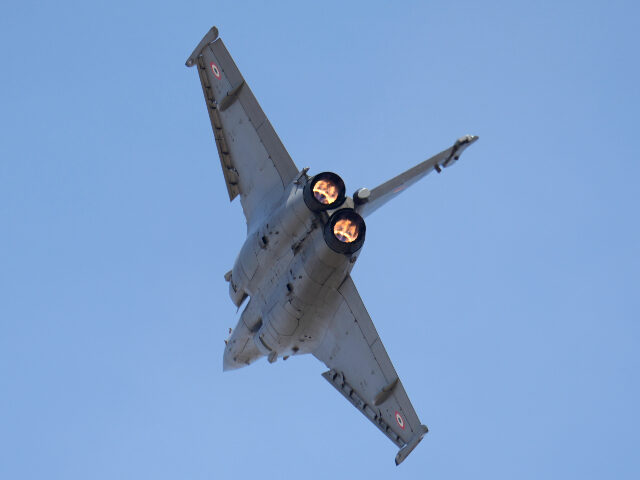The United States showed off its F-35 fighter, B-1B bomber, and other advanced warplanes at an air show in Bengaluru this week to tempt India away from its long-standing, and increasingly awkward, reliance on Russian military hardware.
Reuters pointed out that India is quite receptive to this sales pitch because its supply of Soviet-era fighter jets is decaying, supplies are hard to get from Russia due to sanctions over the Ukraine war, and the Ukraine conflict has not been making Russian military hardware look very appealing.
The relative U.S. and Russian presences at the air show gave the impression that Moscow expects to lose a customer:
The American delegation to the week-long Aero India show in Bengaluru, which ends on Friday, is the biggest in the 27-year history of the show and underlines the growing strategic relationship between the United States and India.
In contrast, Russia, India’s largest weapons supplier since the Soviet Union days, had a nominal presence. Its state-owned weapons exporter Rosoboronexport had a joint stall with United Aircraft and Almaz-Antey, displaying miniature models of aircraft, trucks, radars and tanks.
At previous editions of the show, Rosoboronexport had a more central position for its stall, although Russia has not brought a fighter jet to Bengaluru for a decade after India began considering more European and U.S. fighter jets.
The Indian Air Force is reportedly not looking to purchase the F-35 “as of now,” but two of them were brought to the Aero India expo anyway, with unconvincing assurances that their much-anticipated appearance was “not a sales pitch.”
“The F-35 represents the leading edge of U.S. fighter technology. Aero India is an ideal forum to showcase the most advanced, capable, lethal, and interoperable weapons systems the U.S. has to offer. This system, and others, are designed to penetrate and defeat advanced adversary air defenses,” said Maj. Gen. Julian C. Cheater, Assistant Deputy Undersecretary of the Air Force for International Affairs, absolutely not making a sales pitch of any kind.
The F-35A Lighting II demonstration team from Hill Air Force Base in Utah put on a dazzling display of the fast, highly maneuverable, versatile, and stealthy F-35’s capabilities at the five-day expo. Any urges felt by Indian military officers in the audience to acquire the plane after seeing what it can do were purely coincidental.
India is currently interested in buying Boeing F/A-18 Super Hornets, a top-of-the-line naval aviation fighter, to equip India’s new aircraft carrier, the INS Vikrant.
French media in January published unconfirmed rumors that the French-made Dassault Rafale M fighter has been chosen instead and will be announced in March when French President Emmanuel Macron visits India. According to these rumors, the Super Hornet was eliminated from the competition due to technical and logistical issues, one of those being that India already owns a number of Rafale fighters and is familiar with their upkeep and operation.
The Indian Air Force is also considering a variant of the workhorse Lockheed Martin F-16 fighter, a design called the F-21 that was customized to meet India’s needs – an important requirement being that Indian companies must supply many of the parts, and the planes must be assembled in India. Lockheed Martin touts its partnership with Indian industrial giant Tata as a “historic win-win for the U.S. and India.”
The U.S. has sold over $6 billion worth of helicopters, missiles, surveillance planes, and other military equipment to India over the past six years, but the F-35 would be the unquestioned crown jewel of the U.S.-Indian aerospace partnership, if the Indians decide to buy them and the U.S. decides to sell them.
The F-35 program is very exclusive, and as Turkey can attest, one of the things that gets a country blackballed is buying excessive amounts of Russian military hardware, particularly missiles that might be used to shoot down an F-35. India already owns two air-defense systems featuring the S-400, the very same Russian surface-to-air missile that got Turkey kicked out of the F-35 program.
According to Boeing executives, India has been interested in the F-35 since 2010, but has also considered next-generation planes from its longtime supplier Russia, including models like the Su-75 “Checkmate” single-engine fighter from Russia’s state aerospace company Rostec. The stealthy Su-75 is still in the prototype stage, but Rostec claims it can use supercomputers to dramatically speed up production, with flight tests tentatively scheduled for 2024.

COMMENTS
Please let us know if you're having issues with commenting.